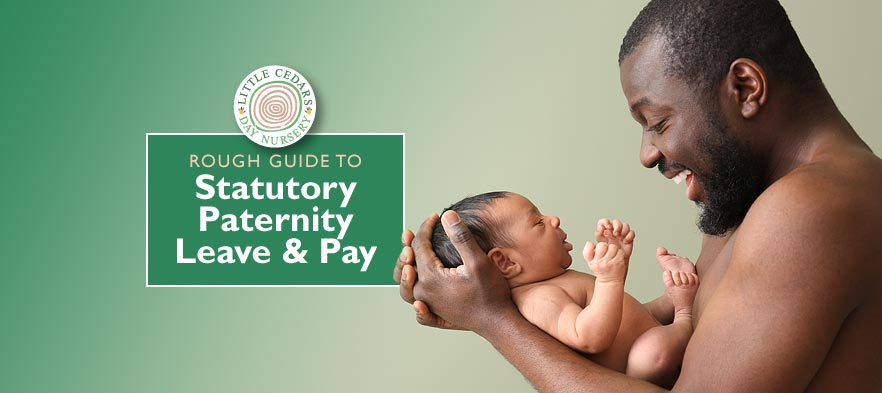
 Following up from our Rough Guide to Statutory Maternity Leave & Pay (for mothers), we follow up with a similar guide for the father (or partner of the mother, including in same-sex relationships). As you’ll see, some of the rules are quite different …
Following up from our Rough Guide to Statutory Maternity Leave & Pay (for mothers), we follow up with a similar guide for the father (or partner of the mother, including in same-sex relationships). As you’ll see, some of the rules are quite different …
Statutory Paternity Leave
An eligible father/partner of the mother can take just one or two weeks of Statutory Paternity Leave off work when their partner has a baby — so, significantly less than the mother. The length of time they’re entitled to does not increase if twins, triplets or more are born — it remains at 1 or 2 weeks total. It’s also worth noting that the paternity leave needs to be taken in one go, not split up into smaller chunks of time.
We should also clarify what counts as a week. This is however many days they work in an average week in their employment.
Timing
 The father, or partner of the mother, must give their employer at least 15 weeks’ advance notice that they wish to take Statutory Paternity Leave. This can be imprecise, however, given that they won’t be 100% certain which day the child(ren) will be born. If they later change the proposed date, employers must be given at least 28 days (4 weeks) notice of the change, made in writing if requested by the employer.
The father, or partner of the mother, must give their employer at least 15 weeks’ advance notice that they wish to take Statutory Paternity Leave. This can be imprecise, however, given that they won’t be 100% certain which day the child(ren) will be born. If they later change the proposed date, employers must be given at least 28 days (4 weeks) notice of the change, made in writing if requested by the employer.
Statutory Paternity Leave must end no later than 8 weeks after the date of the birth (or due date if born early) and must not start until the baby is actually born. Please note that different rules apply for those who are adopting and we do not comprehensively cover those in this article.
Eligibility
To be eligible for Statutory Paternity Leave, the person must be taking time off to look after the child and needs to be:
 the child’s father, or
the child’s father, or- the mother’s husband or partner (including if same-sex), or
- the adopter of the child, or
- if the baby is born through surrogacy, the intended parent.
In addition, the person:
- must be an employee of a company (with an official employment contract);
- must give the correct advance notice (see ‘Timing’ section above);
- must have been working for their employer continuously for 26 or more weeks prior to the 15th week before the baby is due* (N.B. different rules apply for those who are adopting);
- must not have already taken Shared Parental Leave (‘SPL’);
- if adopting, must not have already taken paid time off to attend adoption appointments.
Statutory Paternity Pay
 To be eligible for Statutory Paternity Pay, a person needs to:
To be eligible for Statutory Paternity Pay, a person needs to:
- earn £120 or more each week, before tax;
- give the correct advance notice to their employer (see ‘Timing’ section above);
- be employed by them right up to the date of the birth;
- have been working for them continuously for 26 or more weeks prior to the 15th week before the baby is due* (N.B. different rules apply for those who are adopting).
* The 15th week before the baby is due is is known as the Qualifying Week.
Those whose income has dropped below an average of £120 per week due to being on furlough during the pandemic may still be eligible.
How Much Do They Get?
An eligible father/partner of the mother will receive the lower of £151.97, or 90% of their average gross weekly earnings, per week.  The payments are made through their wages by the employer after deducting any tax and National Insurance if due. (Figures correct at September 2021).
The payments are made through their wages by the employer after deducting any tax and National Insurance if due. (Figures correct at September 2021).
Making a Claim
Fathers/partners of the mother can use the same online tool as mothers to check what they’re entitled to. Start here.
Protected Employment Rights
As with mothers, a number of statutory employment rights for the father/partner of the mother are still protected under law. These include rights to possible pay rises, accruing of holiday leave and of returning to work after completion of the paternity leave. Eligible working parents are able to claim several weeks of unpaid parental leave under certain conditions. If met, they are eligible to take 18 weeks off (unpaid, but per child) before their child is 18. Follow the bold link earlier in this paragraph for more information, via our separate post.
Watch this space because we’ll cover the rules around Shared Parental Leave and more in separate, future guides.
An Outstanding Nursery in Streatham SW16
 This guide was brought to you by the team at Little Cedars Nursery in Streatham. For parents searching for the best nursery for their child in Streatham, Little Cedars represents a great choice. We offer outstanding weekday childcare in Streatham, also being convenient for those requiring a childcare nursery near Tooting, Furzedown, Streatham Common, Streatham Hill, Streatham Park, Balham, Norbury or Colliers Wood. To book a tour, ask a question or register for a nursery place for your child, please use one of the following options:
This guide was brought to you by the team at Little Cedars Nursery in Streatham. For parents searching for the best nursery for their child in Streatham, Little Cedars represents a great choice. We offer outstanding weekday childcare in Streatham, also being convenient for those requiring a childcare nursery near Tooting, Furzedown, Streatham Common, Streatham Hill, Streatham Park, Balham, Norbury or Colliers Wood. To book a tour, ask a question or register for a nursery place for your child, please use one of the following options:


 Today, we’ll take a look at how much time and money mothers are entitled to under Statutory Maternity Leave and what the eligibility requirements are. We’ll concentrate purely on the rules for mothers who are employees in this post. However, we will follow up to cover paternity leave, shared leave and support for self-employed mothers separately, in future guides.
Today, we’ll take a look at how much time and money mothers are entitled to under Statutory Maternity Leave and what the eligibility requirements are. We’ll concentrate purely on the rules for mothers who are employees in this post. However, we will follow up to cover paternity leave, shared leave and support for self-employed mothers separately, in future guides. The good news is that, to be eligible for Statutory Maternity Leave in the UK, just two main rules apply. You need to:
The good news is that, to be eligible for Statutory Maternity Leave in the UK, just two main rules apply. You need to: Statutory Maternity Pay (‘SMP’) is available to mothers who:
Statutory Maternity Pay (‘SMP’) is available to mothers who: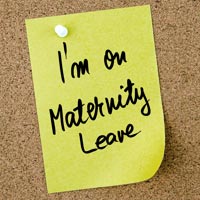 There’s a great online tool that you can use to check whether you are eligible to claim maternity/paternity leave and pay (as well as Maternity Allowance, which may help self-employed mums). It’ll also calculate how much you could receive. Head over to
There’s a great online tool that you can use to check whether you are eligible to claim maternity/paternity leave and pay (as well as Maternity Allowance, which may help self-employed mums). It’ll also calculate how much you could receive. Head over to 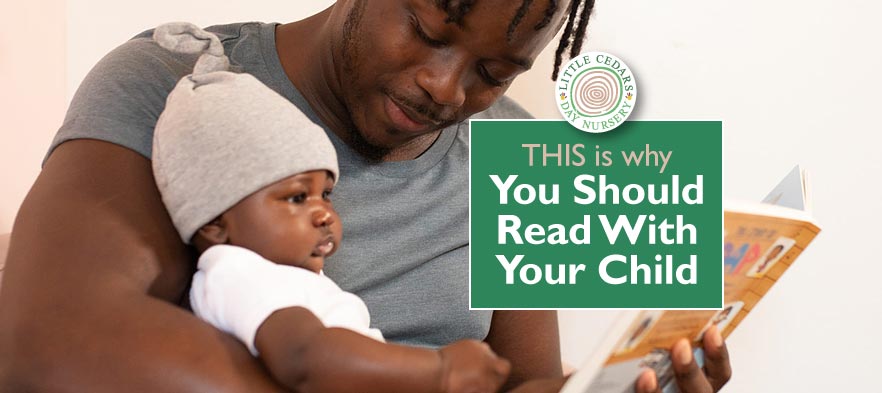
 In April last year, we published a compelling article about
In April last year, we published a compelling article about  Reading with children also makes the task less daunting, particularly for the youngest children. Reading together also makes it more interesting and more fun. When it’s more interesting and more fun, the child is going to enjoy it more and naturally want to read more often — eventually independently — and all of that is priceless as part of their education and general knowledge going forwards. Reading can also bring parent and child closer through the time spent together. It can be great fun for the adult too, particularly when the child gets older and adults are exposed to classic children’s books that perhaps they were not, themselves, exposed to when they were young.
Reading with children also makes the task less daunting, particularly for the youngest children. Reading together also makes it more interesting and more fun. When it’s more interesting and more fun, the child is going to enjoy it more and naturally want to read more often — eventually independently — and all of that is priceless as part of their education and general knowledge going forwards. Reading can also bring parent and child closer through the time spent together. It can be great fun for the adult too, particularly when the child gets older and adults are exposed to classic children’s books that perhaps they were not, themselves, exposed to when they were young. The Nuffield Foundation’s mission is to advance social wellbeing and educational opportunity. In a partnership with the University of Newcastle, the foundation funded a deep study
The Nuffield Foundation’s mission is to advance social wellbeing and educational opportunity. In a partnership with the University of Newcastle, the foundation funded a deep study It will come as no surprise, therefore, to learn that we put all of the above into practice at Little Cedars Nursery in Streatham. Getting closely involved in children’s reading, using a huge variety of reading material in an interactive way, gives our nursery children the very best start in life. Indeed, our childcare professionals prepare them thoroughly for school by the time they leave us. They take with them reading, writing, literacy, language, vocabulary and self-expression skills in the process — and all this accomplished at least in part through guided reading.
It will come as no surprise, therefore, to learn that we put all of the above into practice at Little Cedars Nursery in Streatham. Getting closely involved in children’s reading, using a huge variety of reading material in an interactive way, gives our nursery children the very best start in life. Indeed, our childcare professionals prepare them thoroughly for school by the time they leave us. They take with them reading, writing, literacy, language, vocabulary and self-expression skills in the process — and all this accomplished at least in part through guided reading.
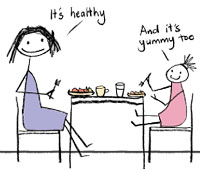 Are you pregnant, or a parent with a child under four? If so, your family may be eligible for free healthy food, milk and vitamin supplements. In England, some of these free items are available under the ‘Healthy Start’ scheme, which we’ll explain in this quick-start guide.
Are you pregnant, or a parent with a child under four? If so, your family may be eligible for free healthy food, milk and vitamin supplements. In England, some of these free items are available under the ‘Healthy Start’ scheme, which we’ll explain in this quick-start guide. Eligible individuals can get the following, absolutely free:
Eligible individuals can get the following, absolutely free: The infant formula milk:
The infant formula milk: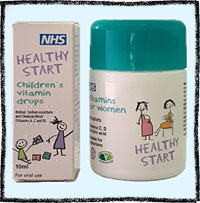 These free vitamin supplements are important for pregnant women, breastfeeding mums, babies and young children because many are deficient in them at this stage in their lives.
These free vitamin supplements are important for pregnant women, breastfeeding mums, babies and young children because many are deficient in them at this stage in their lives. In order to be eligible for Healthy Start vouchers, you need:
In order to be eligible for Healthy Start vouchers, you need:
